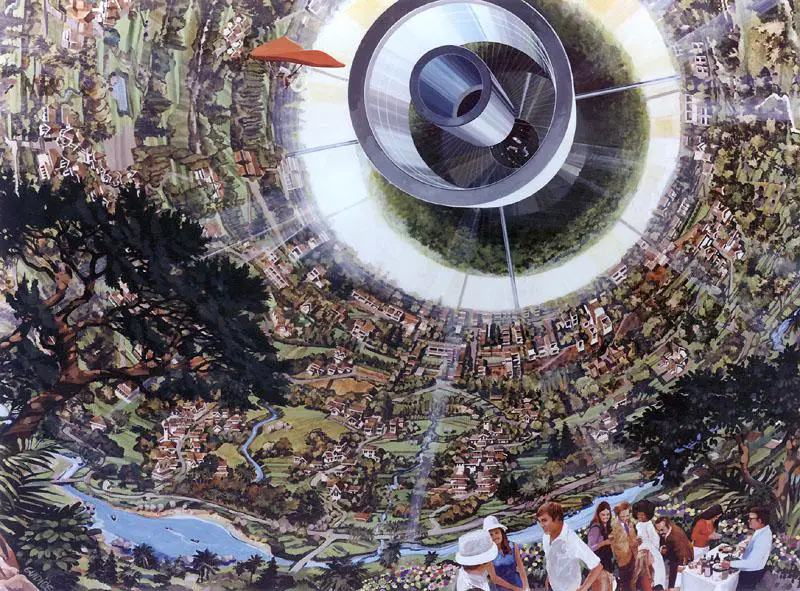Artificial Gravity Systems
Artificial gravity is essential for life on a space colony. It uses the rotation of the habitat to mimic Earth's gravity. The key is creating a solid structure that spins to generate a consistent gravitational pull.
Centrifugal force is the principle at work here. Spin something fast enough, and it creates a force that feels like gravity, keeping objects and people grounded. However, the rotation rate must be carefully controlled. Spin too quickly, and the difference in pull between one's head and feet can cause disorientation.
The ideal setup involves a balance between slower spins and a larger radius. This ensures the gravitational force feels even throughout the body, simulating a natural Earth-like environment. Research indicates that rotation rates around 1 to 2 revolutions per minute are optimal for human comfort.
The design of these habitats often involves large cylindrical structures. Their size and rotation speed determine how comfortable and Earth-like the living conditions will be. These structures must also incorporate familiar elements like parks and homes alongside the necessary technology, creating a balance between comfort and functionality.
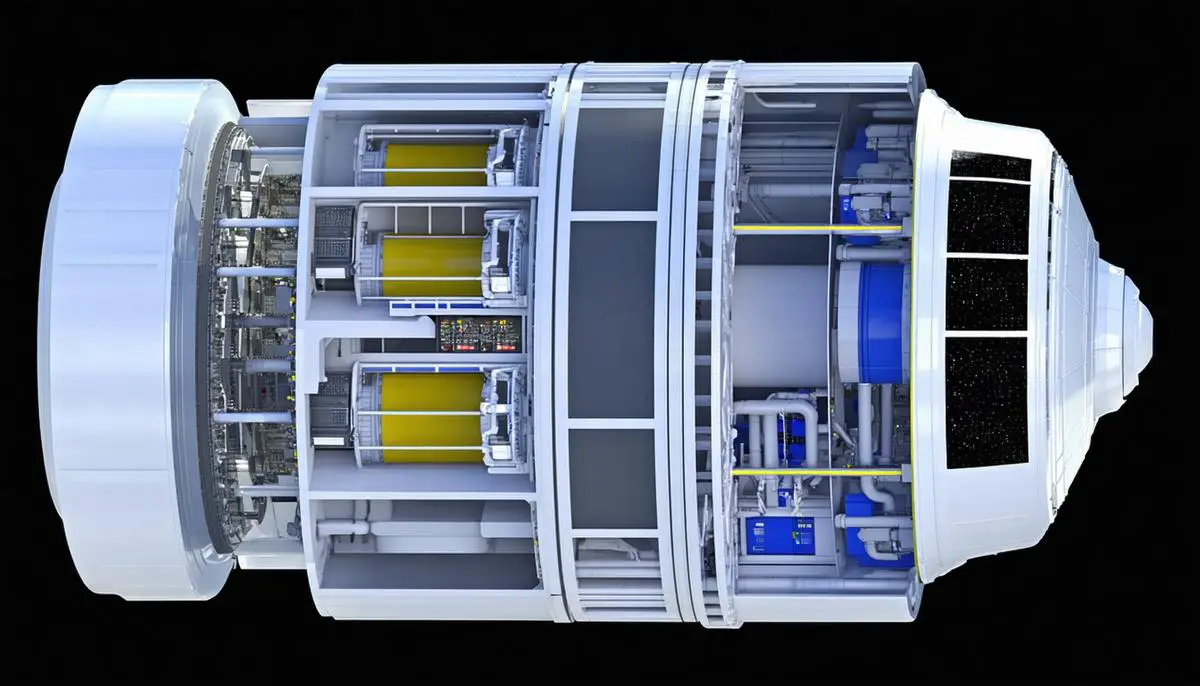
Radiation Protection Strategies
Protecting space colony inhabitants from cosmic and solar radiation is crucial. One innovative solution uses regolith, the dust and dirt found on moons and asteroids. By layering this material around the colony, it acts as an effective radiation shield.
Water also plays a vital role in radiation protection. When combined with regolith, it enhances the shielding properties. This water-regolith mixture creates a protective layer that effectively deflects cosmic rays.
The protective shell is integrated into the habitat's structure, serving both functional and aesthetic purposes. Solar panels on the exterior contribute to the colony's energy needs while adding to its protective capabilities.
Temperature management is another benefit of this design. The structure's rotation and protective layers help maintain a comfortable climate within the habitat, mimicking Earth-like conditions.
This approach to radiation protection showcases human ingenuity in space exploration, using simple materials in innovative ways to create safe, livable environments far from Earth.
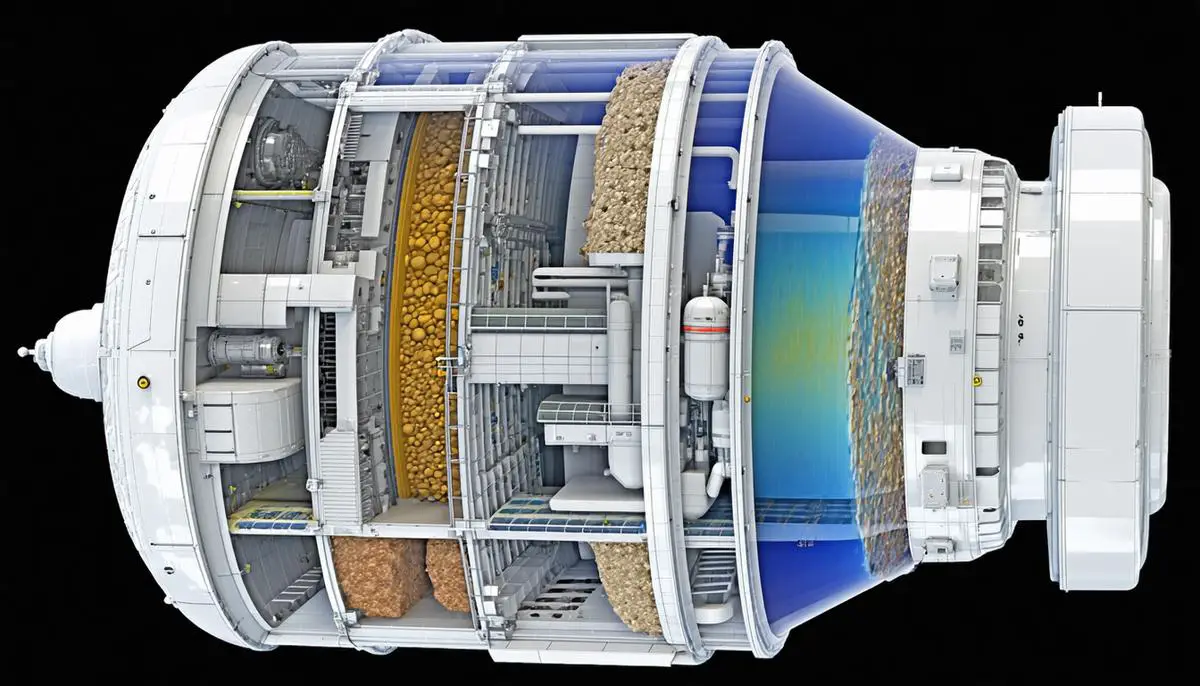
Sustainable Agriculture in Space
Space agriculture goes beyond traditional farming methods. In space habitats, farms take on unique forms, such as conical structures within rotating cylinders. These designs maximize surface area and sunlight exposure, crucial factors when growing crops in space.
Artificial lighting plays a key role, mimicking Earth's day-night cycle. These lights are calibrated to provide the optimal spectrum and intensity for plant growth, ensuring healthy crops despite the absence of natural sunlight.
Resource recycling is fundamental to space agriculture. Closed-loop systems reuse water, nutrients, and even waste products, creating a highly efficient and sustainable farming ecosystem.
The challenges of space farming drive innovation in biology and engineering. Each successfully grown plant represents a triumph of human ingenuity and adaptability in the face of extreme conditions.
This celestial agriculture not only provides sustenance but also offers a psychological connection to Earth. The presence of familiar plants and the act of cultivation provide comfort and a sense of home for space colonists.
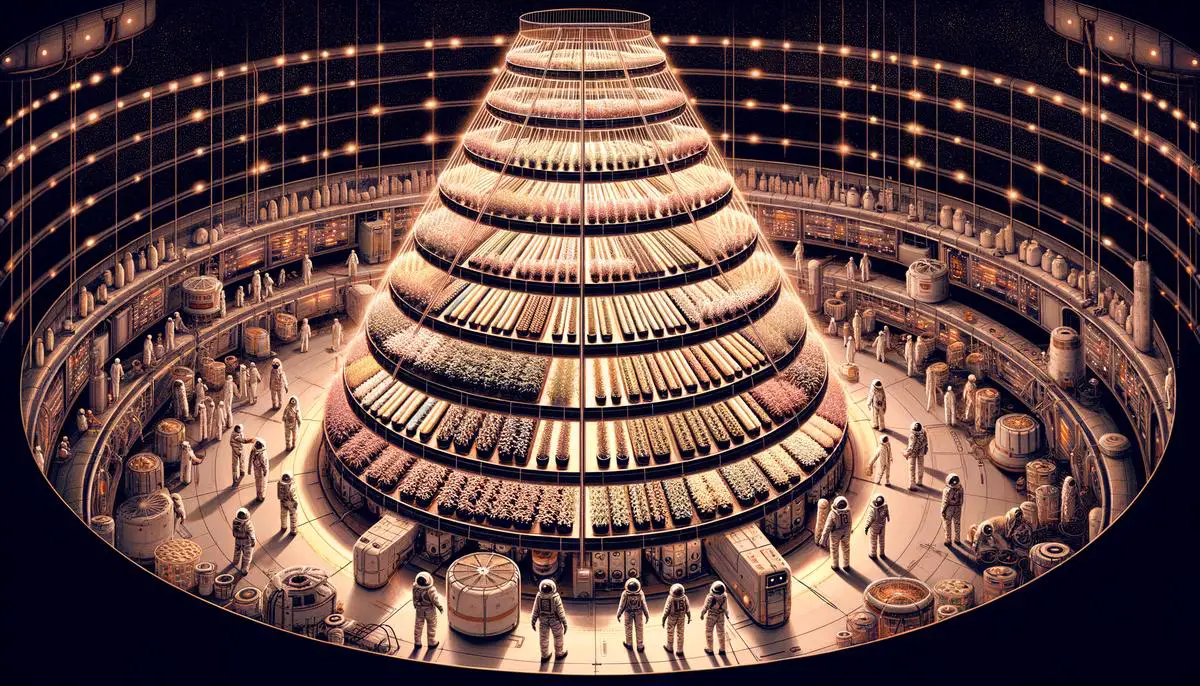
Expandable Habitat Design
Expandable space habitats employ the principle of tensegrity, a design concept that balances tension and compression. This approach allows structures to grow and adapt over time, much like living organisms.
These habitats start with a core module containing essential systems. As needs grow, additional cylindrical layers are added, expanding the living space seamlessly. This modular design ensures that the colony can evolve without disrupting existing operations.
The flexibility of these structures allows for repurposing spaces as needed. Areas can be transformed from workshops to parks or from markets to living quarters, adapting to the changing needs of the colony.
Despite their adaptability, these habitats maintain structural integrity through careful engineering. Each expansion respects the principles of tensegrity, ensuring stability in the challenging space environment.
This approach to habitat design is not only practical but also cost-effective. The ability to expand incrementally reduces initial costs and allows for gradual investment as the colony grows and develops.
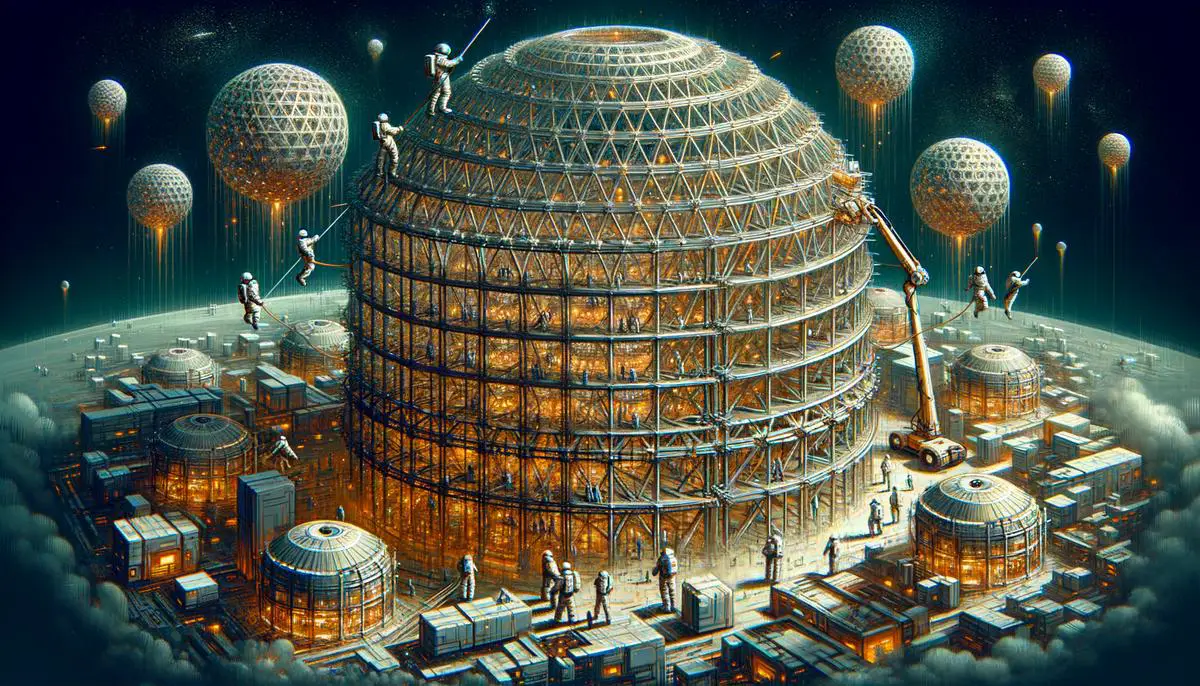
Economic and Commercial Viability
Space colonies offer diverse economic opportunities. Tourism stands out as a potential major industry, offering unique experiences like weightlessness and unparalleled views of space phenomena.
Zero-gravity manufacturing presents another promising avenue. The absence of gravity allows for the creation of materials and products impossible to produce on Earth, potentially revolutionizing industries such as pharmaceuticals and advanced materials.
Energy production, particularly solar power, could become a significant economic driver. Space colonies have unobstructed access to sunlight, allowing for efficient solar energy collection. This energy could power the colony and potentially be transmitted back to Earth.
The interplay of these economic sectors creates a robust commercial ecosystem. Tourists might create demand for space-manufactured goods, while energy production supports all operations. This economic diversity enhances the long-term sustainability of space colonies.
As these industries develop, they're likely to create new job opportunities and drive innovation, further solidifying the economic foundation of space habitation. The economic potential of space colonies extends beyond mere survival, offering pathways to prosperity and technological advancement.

In the vast expanse of space, humanity's quest for a sustainable future is not just about survival but thriving amidst the stars. The intricate dance of technology and innovation paints a picture of a future where life flourishes beyond Earth, driven by human ingenuity and the spirit of exploration.
- NASA. Twins Study. National Aeronautics and Space Administration.
- Fuller R. Tensegrity. Portfolio and Art News Annual, No. 4. 1961.
- National Research Council. Radiation Hazards to Crews of Interplanetary Missions: Biological Issues and Research Strategies. Washington, DC: The National Academies Press; 1996.
![]()
